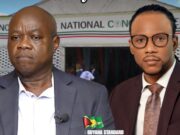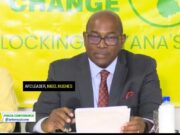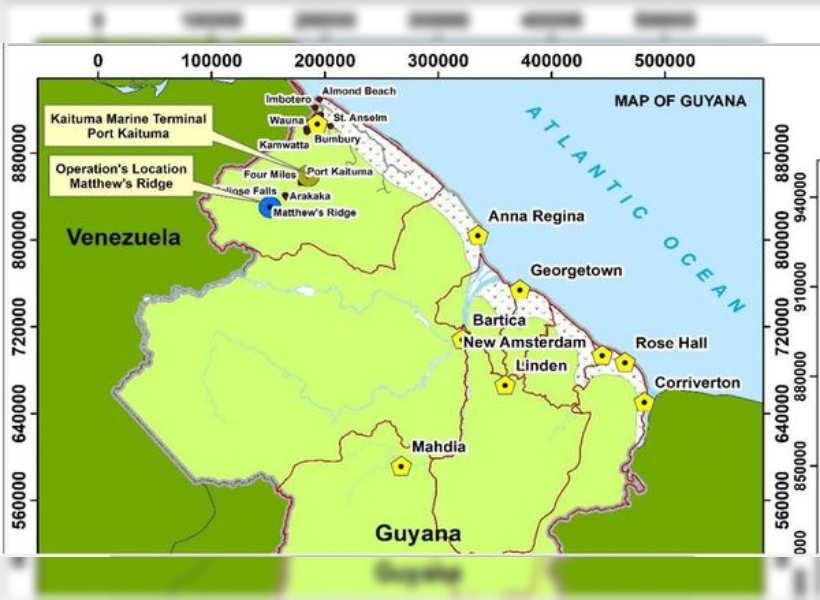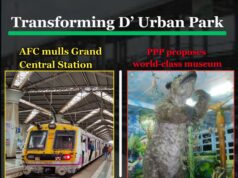Guyana Manganese Incorporated (GMI), the company that was created in 2016 as a subsidiary of the Bosai Minerals Group of the People’s Republic of China, plans to invest US$75M (GYD 15.7B) in the resuscitation of manganese mining and processing in Matthew’s Ridge and export from Port Kaituma.
According to the company’s Environmental Impact Assessment (EIA) that was perused by this news agency, it plans to resume works after rehabilitation of the previously mined site and infrastructure with the aim of producing 2 million tonnes of manganese ore annually for processing to turn out 500,000 tonnes of concentrates for intermediate shipment to Brighton Port, Trinidad.
To realize this project, GMI said some 400 workers will be required over a one-year construction period. It said project operation is intended to employ over 400 workers, of which 340 (85 percent) would be Guyanese with the others being technical trainers and process specialists from China.
At Port Kaituma, it said the construction of the Kaituma Marine Terminal will require approximately 200 workers over a 7-month construction period while project operation is intended to employ about 30 workers, of which 27 (90 percent) would be Guyanese with the others being administrators and specialist technicians from China.
Guyana Standard understands that the extraction rates planned when related to current reserves yield a mine and project life of 13 years. GMI said too that its manganese operations will involve: extraction and processing of the remaining mineral resources at the Matthew’s Ridge mining locations; re-establishment of disused and degraded mine infrastructure including mine roads, pit benches, stockpile areas for ore and concentrate, mine administration, and facility buildings; and the construction of a new Kaituma Marine Terminal comprising of a turning basin, moorage, wharfage for ocean-going barge loading, weigh-bridge, administrative facilities, and storage yard.
GMI was keen to note that the Environmental Protection Act (1996) requires that it seeks authorization from the Environmental Protection Agency (EPA) for establishing facilities at Matthew’s Ridge and Port Kaituma for mining, processing, and transport of ore. Accordingly, GMI said it submitted an application for Environmental Authorisation in January 2019. Based on an assessment of the Application, the EPA determined that an Environmental Impact Assessment was required for the project. The EPA also advised GMI to submit a separate application for Environmental Authorisation for project facilities in Port Kaituma.
In September 2019, GMI said the EPA issued two construction permits to allow construction of project facilities to commence at Matthew’s Ridge and Port Kaituma while the EIA preparation process was ongoing. The EPA subsequently issued a Terms and Scope to guide the preparation of the EIA.
Manganese mining has historically played a crucial role in the development of Guyana’s North West District in Region One. Manganese occurrences were first observed in Matthew’s Ridge, Arakaka, and Pipiani in 1937 and by 1957, Manganese Mines Management Limited commenced establishing the facilities and infrastructure required to mine and export manganese ore.
Mines facilities included mine buildings and processing plant at Matthew’s Ridge some relics of which remain standing at present. The company said it also transformed public transportation infrastructure with the construction of a 48-kilometer (30-mile) railway with adjacent roadway for the transport of ore from Matthew’s Ridge to Port Kaituma; built a Bailey bridge over the Barima River at Eclipse Falls and dredged the Kaituma Canal, the Mora Passage and sections of the Barima River.
Ancillary shipping infrastructure was also established at Port Kaituma. Mining commenced in 1961, however, by 1968, a precipitous fall in the price of manganese caused operations to cease. Over the eight-year operational period, a total of 1.7 million tonnes of manganese ore was exported. Operations never resumed although multiple attempts were made by several different investors in the 1980s as well as in 2008 and 2011.













